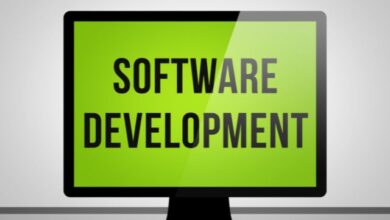Integrated Circuit (IC) | Types, Uses, & Function

An integrated circuit (IC), also called a microchip, is a tiny semiconductor device that contains billions or even trillions of electronic components, such as transistors, resistors, and capacitors. These components are interconnected to form a complete circuit that can perform a specific function, such as amplifying a signal, processing data, or storing memory.
ICs are the fundamental building blocks of all modern electronic devices, from computers and smartphones to cars and medical devices. They are also used in a wide range of industrial and military applications.
Types of Integrated Circuits
Integrated circuits offered by electronic parts supplier come in various types, each tailored for specific applications. Here are some of the most common types:
1. Analog Integrated Circuits (ICs)
Analog ICs process continuous signals, such as voltage or current, and are vital for tasks like amplification, filtering, and signal conditioning. They are commonly found in audio devices, sensor interfaces, and analog-to-digital converters.
2. Digital Integrated Circuits (ICs)
Digital ICs deal with discrete values, often in the form of binary code (0s and 1s). These chips are the building blocks of modern computers, smartphones, and countless other digital devices. They can perform logical operations, memory storage, and arithmetic calculations.
3. Mixed-Signal Integrated Circuits
Mixed-signal ICs combine both analog and digital functionality. They are used in applications where analog signals need to be processed and converted into digital data or vice versa. Examples include data acquisition systems and wireless communication devices.
4. Power Management ICs
Power management ICs are designed to regulate and distribute power within electronic devices. They play a crucial role in ensuring that electronic devices operate efficiently and reliably while conserving energy. Examples include voltage regulators and battery management systems.
5. Radio-Frequency Integrated Circuits (RFICs)
RFICs are specialized ICs used in wireless communication devices, including cell phones, Wi-Fi routers, and satellite receivers. They are designed to handle high-frequency signals, making them suitable for transmitting and receiving data wirelessly.
6. Microcontroller and Microprocessor ICs
Microcontrollers and microprocessors are the brains of most electronic devices. Microcontrollers are commonly found in embedded systems, while microprocessors power computers and smartphones. These ICs execute instructions and control the device’s operation.
7. Memory ICs
Memory ICs are responsible for storing data in digital devices. They come in various types, including volatile (RAM) and non-volatile (ROM, Flash) memory. You can find them in everything from your computer’s RAM to your smartphone’s internal storage.
Uses of ICs
ICs are used in virtually every electronic device today. Here are a few examples:
- Computers: ICs are used in all parts of a computer, including the microprocessor, memory, graphics card, and motherboard.
- Smartphones: ICs are used in all parts of a smartphone, including the display, processor, camera, and battery.
- Cars: ICs are used in all parts of a car, including the engine, transmission, brakes, and airbags.
- Medical devices: ICs are used in a wide range of medical devices, such as pacemakers, MRI machines, and insulin pumps.
- Industrial and military applications: ICs are used in a wide range of industrial and military applications, such as robots, aircraft, and weapons systems.
Function of ICs
ICs function by processing electrical signals. These signals can be analog, digital, or mixed-signal.
Analog signals are continuous signals that can vary in amplitude (strength) and frequency (rate of change). Digital signals are discrete signals that can only have two values: high or low. Mixed-signal signals are a combination of analog and digital signals.
ICs can process these signals in a variety of ways, such as amplifying them, filtering them, or converting them from one type of signal to another.
Advantages of ICs
ICs offer a number of advantages over traditional discrete component circuits, including:
- Miniaturization: ICs are much smaller than traditional discrete component circuits. This allows them to be used in smaller and more portable devices.
- Reliability: ICs are more reliable than traditional discrete component circuits. This is because they are manufactured in a controlled environment and are less susceptible to failure.
- Cost: ICs are less expensive than traditional discrete component circuits. This is because they are mass-produced using automated manufacturing processes.
Summing Up
ICs are essential components of all modern electronic devices. They are used in a wide range of applications, from computers and smartphones to cars and medical devices. ICs offer a number of advantages over traditional discrete component circuits, including miniaturization, reliability, and cost.
FAQs
1. Which ICs are most commonly used?
Logic gates, flip-flops, multiplexers/demultiplexers, counters, registers, etc are the ICs that are most commonly used.
2. What is the use of IC in digital electronics?
To perform digital operations, such as logic, arithmetic, and memory.





